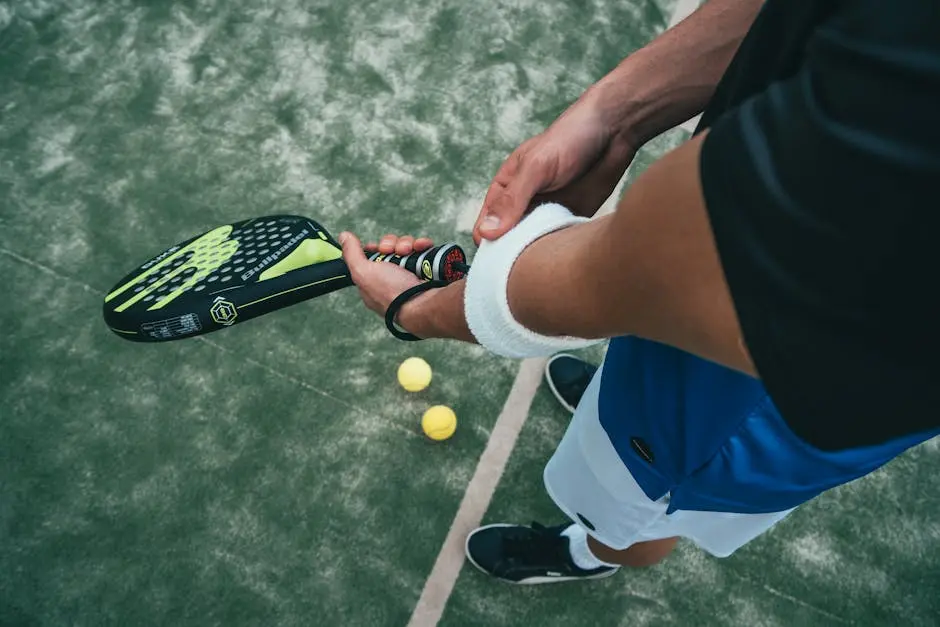In the world of sports, few names resonate as strongly as adidas. Known for its innovation and style, the brand has played a pivotal role in revolutionizing the equipment that defines the game. This blog will dive into the evolution of sports balls and how adidas has consistently led the charge towards superior performance and inclusivity.
The Evolution of Sports Balls
From leather to synthetic materials, sports balls have undergone significant transformations over the years. We’ll explore how these changes have improved performance and gameplay.
The initial design of sports balls was simple: a casing that contained air. However, as sports became more competitive and athletic performance became more paramount, the materials and engineering behind these balls evolved dramatically. Brands like adidas recognized early on that to elevate gameplay, they needed to innovate. Enter synthetic materials, which not only provided durability but also enhanced control and precision. A football could be kicked with greater power without fear of wear, and a basketball could bounce higher and straighter than ever before.
Moreover, the shift from heavy leathers to light synthetics meant that players could focus more on skill rather than simply on managing equipment. With lighter balls came faster game play, dynamic movements, and more exciting plays that kept fans on the edge of their seats. The evolution hasn’t just been physical; it’s embraced technological advancements too, with designs focusing on aerodynamics and performance metrics that help athletes gain a competitive edge.
As we explore this journey of transformation, it becomes evident that adidas has been more than just a participant in the evolution of sports balls. They’ve been a driving force, pushing boundaries and challenging norms—something every athlete can appreciate.
How adidas Set the Standard
Adidas has been at the forefront of sports ball innovation, setting benchmarks that others strive to meet. Let’s examine some iconic models that changed the game.
One cannot discuss adidas without mentioning the iconic Tango España, used in the 1982 FIFA World Cup. Its unique design and impeccable performance redefined expectations for a soccer ball. The Tango’s innovative 20-panel structure not only gave it a remarkable shape but also provided consistency in flight and control. As players like Diego Maradona dazzled the world, adidas defined what it meant for a sports ball to be synonymous with excellence.
Similarly, the Brazuca, introduced for the 2014 World Cup, pushed technological boundaries by utilizing a six-panel design that optimized stability at high speeds. The feedback from players was overwhelmingly positive; they appreciated not just the ball’s performance but also its predictability. In many ways, each ball adidas releases becomes a statement, shaping not just how the game is played but also the standards that other brands aim to achieve.
By embracing innovation while keeping athlete needs in mind, adidas continually establishes a reputation that extends beyond mere functionality. It intertwines performance with artistry, leading to affordable elite-level equipment that’s accessible to athletes of every proficiency. It’s this approach that keeps adidas at the forefront, as they bridge the gap between challenge and capability.
Sustainability and Innovation
As environmental concerns grow, adidas is leading the way in sustainable practices within sports equipment manufacturing. Discover their initiatives and how they blend performance with responsibility.
In a world increasingly focused on green initiatives, adidas has made a commitment to sustainability that resonates strongly across their product lines. Beginning with their approach to materials, they have begun to utilize recycled plastics in the creation of many of their sports balls. Not only does this reduce waste, but it also paves the way for creating high-performance products that do not compromise on quality. This innovative spirit reinforces the idea that great sporting equipment can also respect the planet.
In addition to using eco-friendly materials, adidas has also made strides in their production processes. By optimizing manufacturing techniques, they’ve reduced their carbon footprint significantly. Imagine the satisfaction athletes feel when using balls that not only enhance their performance but also contribute to a better world. This dual focus on performance and sustainability has created a unique niche in the market, giving consumers a choice that feels good both in spirit and in practice.
The sustainability movement is essential not just for ethical reasons but for the longevity of sports themselves. If we want future generations to enjoy athletics, eco-friendly practices are paramount. It’s a grassroots sentiment that resonates at the highest levels, and adidas is proud to lead that charge, fostering a community-wide shift toward responsible athletics.
Technological Advances in Sports Balls
From smart technology to enhanced materials, adidas is redefining what’s possible. This section will delve into the latest tech that is shaping the future of sports balls.
With the advent of the Internet of Things (IoT), adidas is at the forefront of utilizing smart technology across their sports ball lineup. Imagine a soccer ball that tracks your kick speed and trajectory, feedback that can be analyzed through a connected app. This kind of technology transforms training, allowing athletes to fine-tune their performances, identifying strengths and weaknesses with data-supported accuracy. With each kick, athletes gain insights into their game like never before.
Additionally, adidas focuses on materials that enhance the sensory experience of gameplay. Advanced polymers are not only durable but can also be engineered for optimal grip and feel. These advancements contribute to intuitive gameplay and greater confidence among athletes, leading to jaw-dropping performances. The tools of modern athletes empower them, and with adidas, they’re prepared to tackle the challenges in their sport with greater precision.
The integration of blockchain in authenticity verification also offers players peace of mind, ensuring that they’re using officially licensed equipment. This tech-savvy approach signifies a major shift in industry norms, where accountability and transparency take priority. Adidas’s pioneering efforts ensure that the future of sports balls is not just bright but also intelligent.
The Athlete’s Perspective
Athletes are the ones who truly experience the impact of equipment changes. We’ll share insights and testimonials from professional players on how adidas balls have influenced their performance.
When it comes to performance, the athlete perspective is irrefutable. Many players have lauded the experience of playing with adidas balls, including elite soccer stars who admit that using the Tango has influenced their precision on the field. ‘It feels like an extension of my foot,’ one athlete shared, highlighting how the design allows for effortless control and striking power. Testimonials like this highlight not just how players feel but how they perform, transforming the game and influencing career trajectories.
Moreover, the input from athletes guided the design and functionality of training balls, allowing adidas to create products that meet real-world demands. A prominent basketball player noted that the textured surface of their latest indoor ball offers an unparalleled grip, enhancing their shooting accuracy in practice sessions. These stories go beyond mere consumer feedback; they portray a reality where the ball isn’t just an object but rather a pivotal part of an athlete’s journey to success.
Feedback from various sports shows that adidas understands the specific needs of athletes, creating versatile solutions that accommodate different styles of play. Whether on the pitch or the court, athletes are experiencing a new level of performance that transforms their gameplay, affording them the confidence they need to take risks and push boundaries.
The Future of adidas in Sports
What lies ahead for adidas and the sports equipment industry? We will explore potential trends and innovations that may emerge in the coming years.
Looking forward, we can confidently say that the future of adidas seems bright, filled with promise and innovation. As the athletic landscape continues to evolve, so too will the technologies that support it. Advancements in artificial intelligence will likely yield even more personalized equipment tailored to individual athlete preferences, adapting in real-time to improve performance.
Moreover, partnerships with tech companies may lead to groundbreaking developments, integrating more interactive features with sports balls, such as performance analytics tools embedded within the ball. Picture a future where players receive immediate, actionable feedback every time they practice—a concept that once seemed almost fantastical is now tangibly within reach.
This harmonious merger of technology and sports will redefine not just participation but also the spectator experience, allowing fans to become more engaged in the narrative of the game.
Ultimately, as adidas continues to prioritize innovation rooted in sustainability, the company will not only lead the way in sophisticated equipment but also in nurturing a responsible sports culture. With the focus on reducing environmental impact, we can expect adidas to forge ahead, ensuring that the sports we cherish today will be available for future generations to enjoy, all while enhancing athlete performance—a legacy we can all celebrate.
The Lasting Legacy of adidas in Sports
The impact of adidas on the sports ball industry is undeniable. Through innovation, commitment to sustainability, and focus on athlete needs, they’ve not only transformed the game but also inspired future generations. As we look to the future, it will be exciting to see what new advancements adidas will introduce to further enhance the sports we love.





